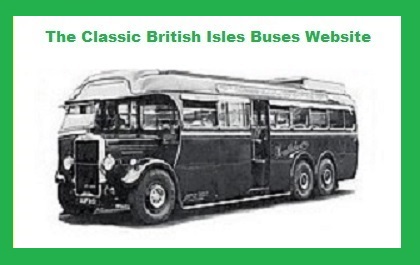

The Classic British Isles Buses Website
Transport in India in 2006: page 2 - trucks and railways (by Dick Gilbert)
Last updated 28 August 2024
Email Events diary Past events list Classified adverts Classic U.K. Buses Classic Irish Buses Classic Manx Buses
This is page two of my photographic essay about transport in India in 2006. This time we examine the glorious and colourful trucks, and take a brief look at part of the Indian railway system. Follow the above links for the other Indian transport sections:
Try as I might, I was unable to find any significant number of trucks that weren't either made by Tata or Ashok Leyland. These two companies have now completely dominated the heavy chassis market, both in trucks and buses. Tata Group claims a 59% market share, and manufactures their trucks at a huge plant in Pune (formerly known as Poona). The vast Tata empire is run by Parsees (Zoroastrians), of which there are more than 60,000 in the company's home city of Bombay. Religion also impacts on the trucking fraternity in another way, in that the majority of truck drivers are Sikhs. Religion, dress, social status and occupation are all intertwined in India.
Ashok Leyland (see their website here), with their factory in Chennai (formerly known as Madras), claim a 30% share. Formed as Ashok Motors in 1948, a joint venture with Leyland Motors in 1955 led to the change of name. The old Leyland circular badge and logo are still in use today. The remaining 11% of the market is probably accounted for by more minor manufacturers, such as the growing enterprise of Eicher, who build small trucks and tractors.
You would expect a boring uniformity from this apparent lack of competition among the chassis manufacturers, but in fact the trucks are all decidedly individual, and have considerable interest, both due to their bright liveries and also for the way they are spectacularly overloaded. Anyway, let's start with this fellow:
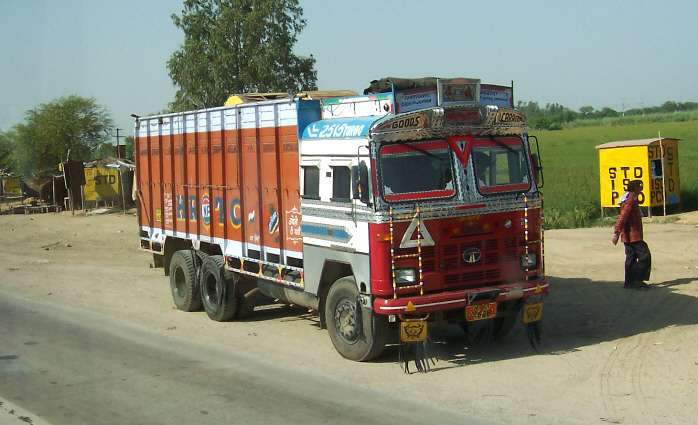
Seen near Agra, this is a typical Tata 2515 TC Turbo truck, powered by a 5.9 litre 6-cylinder Cummins diesel engine. Bodywork (particularly cabs) can vary enormously, and are probably built by a variety of local manufacturers, as well as being heavily customised by the owner or operator. This one doesn't seem to be too overloaded, although we don't know the weight of whatever he has in the back. Here's another one.
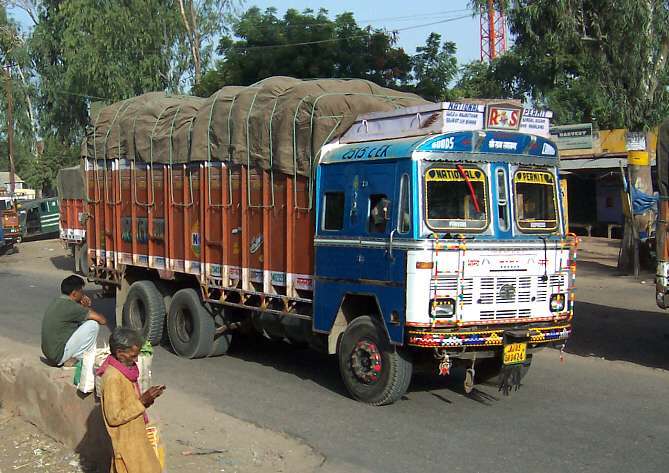
Once again this is a Tata 2515, wearing a Rajasthani plate and seen passing through a village east of Jaipur. I love the rainbow colours on the front ladders, the single red wiper, and the red spots on the wheels. The item hanging down underneath at the front is a shoe, by the way. Below is yet another Tata.
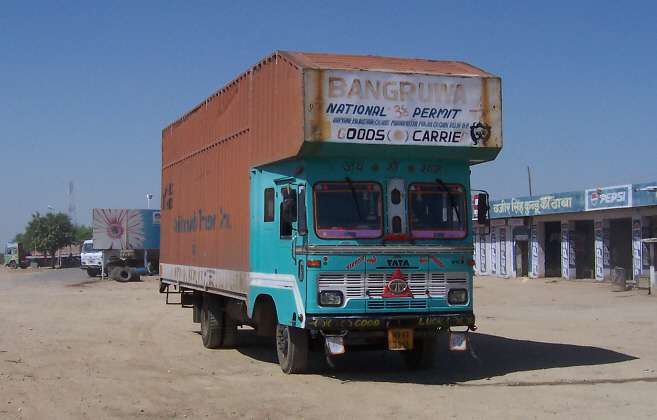
The larger enclosed wagons often look like this, which is probably a Tata LPO 1612, with a Haryana state plate (HR). In fact this view doesn't show the true length of these vehicles, as seen better in the photo taken near Jaipur of a similar example below:
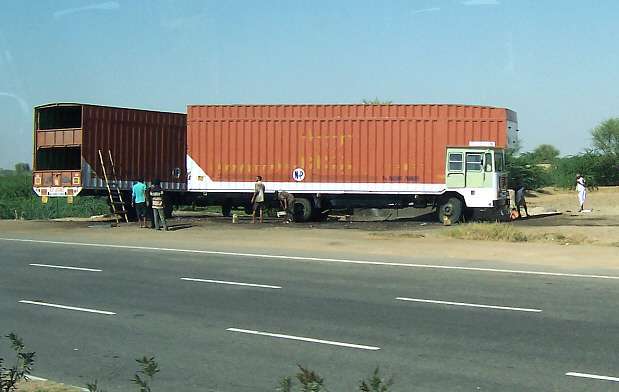
Note the huge overhang of the bodywork at the rear. Below is an open truck on the same Tata chassis, and again near Jaipur. National Permit written across the windscreen refers to the range of state licences granted to the carrier.
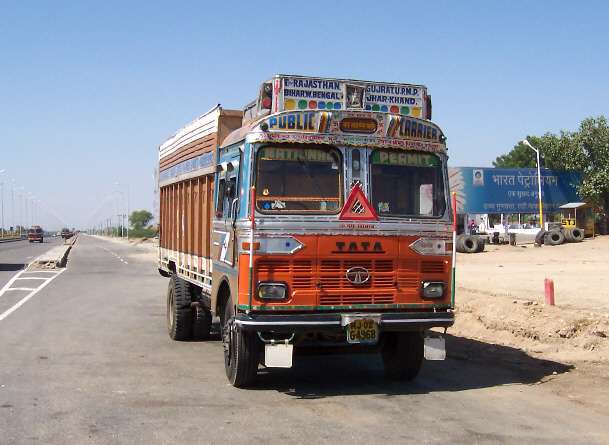
Next we go back to the Tata 2515 chassis again, near Ajmer, and this is a typical example of heavy loading.
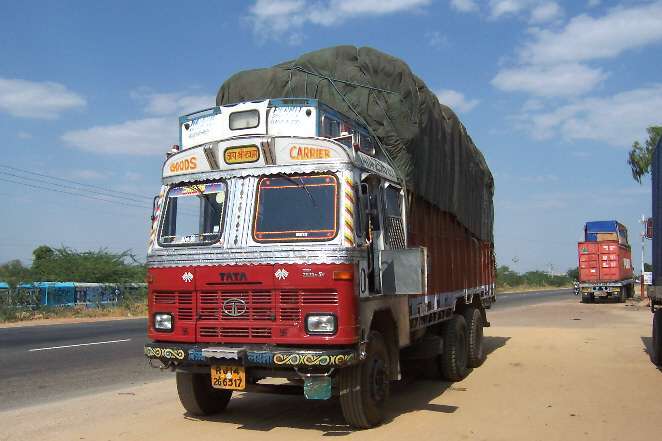
We didn't see many mechanical breakdowns, but those that did occur were usually as a result of the rear axle collapsing under the excessive weight. That could take some days to sort out (with the vehicle immoveable in the position it had stopped) and, if the road was narrow, a complete blockage could occur, resulting in all the traffic taking to the adjacent fields to get round it. The back of every truck bore an inscription.
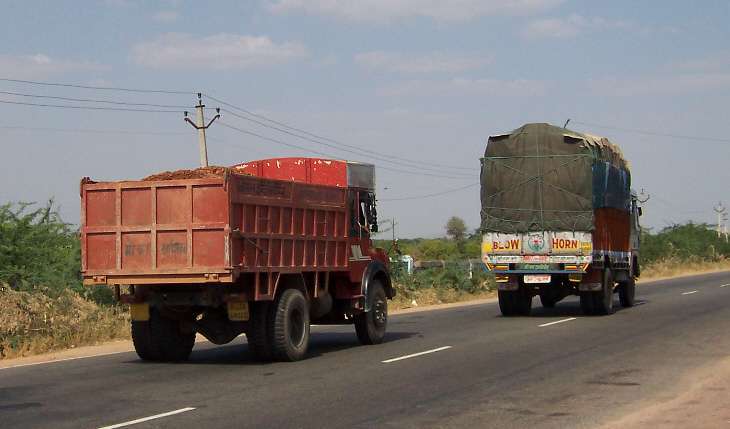
In this case the notice (more visible on the truck on the right) is blow horn, but horn please was also common. This was a request to the truck behind to give a driver a loud warning that he was in the process of overtaking. In fact this seemed to have little purpose as (1) he was going to overtake anyway, whether it was safe or not, and (2) everyone was blasting on their horns all the time in any case. Below we have a couple of Ashok Leylands.
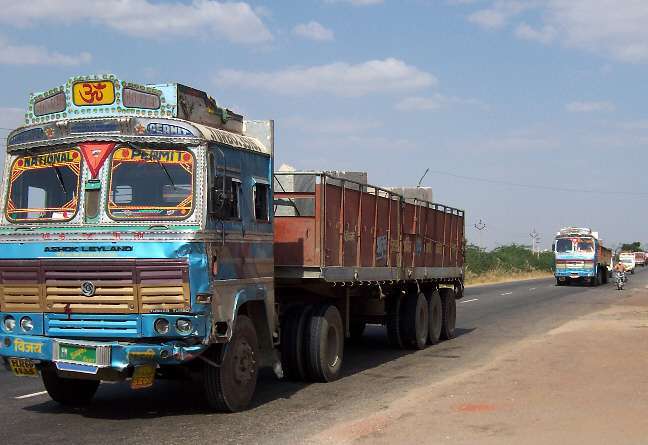
This is the 3516 tractor/trailer with a 165 hp Leyland engine, hauling marble in Rajasthan. Although a bit battered (hardly surprising considering the heavy work involved with the marble trade), they still display the round Leyland badge on the radiator grille, familiar to the British from a few decades ago. The photo below shows a common sight on Indian roads.
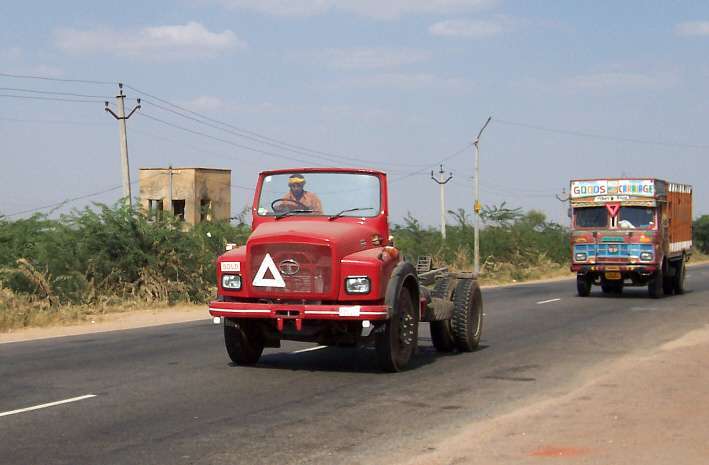
Here is a Tata SE.1613 chassis / cab en route to a body builder for completion, and we saw a large number of such cases, sometimes several in convoy. This particular design seems to have more than a hint of Mercedes about it.
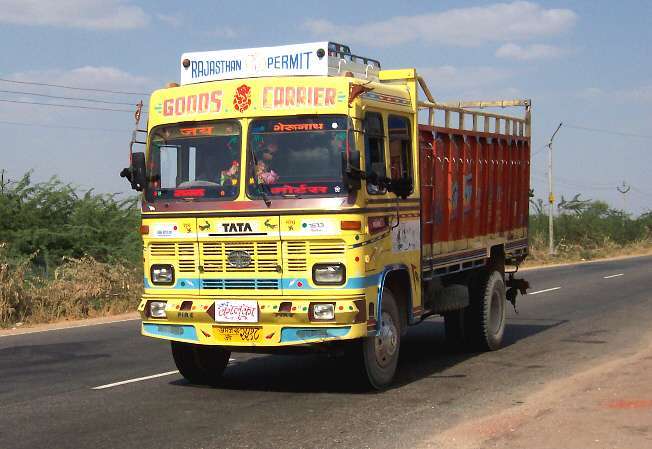
Lastly here is a fairly new and colourful Tata LPT 1613 seen in Rajasthan. He has only a Rajasthani permit, so is clearly used purely for local work. Now we turn our attention briefly to Indian railways.

This was our steed for the Ajmer-Jaipur-Delhi Shatabdi Express. Class WDM-2 broad-gauge diesel no. 18666 waits briefly at Jaipur. The design dates back to 1962, although most survivors have been rebuilt in subsequent years, sometimes with an R suffix after the number. The inscription TKD indicates, I think, that loco is based at Tughlakabad diesel shed.
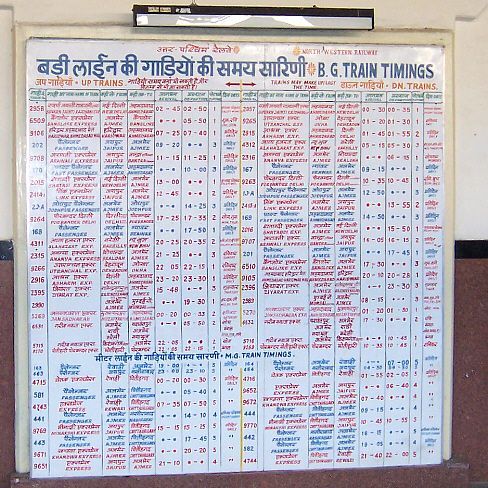
This is the North Western Railway arrivals and departures board at Ajmer. BG Trains at the top are broad gauge (5' 6"), with medium gauge (or metre gauge) timings at the bottom. I also spotted some narrow gauge (2' 6") lines at Phulera Junction on the way. I hope the script is readable, but anyway our train was no. 2016, about halfway down on the right-hand side (down trains), the Shatabdi Express to New Delhi departing at 1550. It departed on time, but was hopelessly late by the time it got to Delhi.
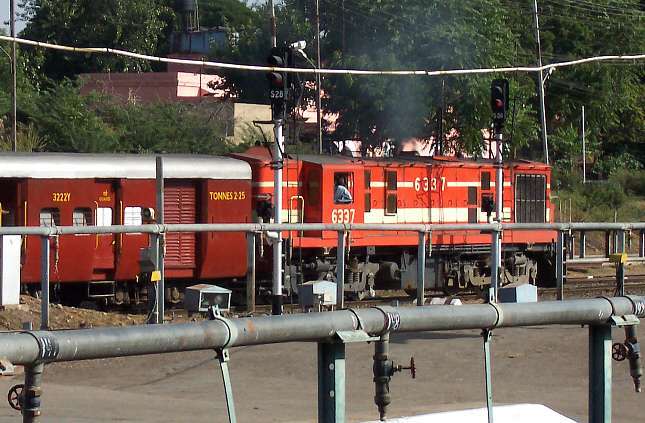
Pulling goods south out of Ajmer on the medium (or metre) gauge line is Class YDM-4 Co-Co diesel electric no. 6337. Again dating back originally to the 1960s, many of the locomotives in this class have now been withdrawn or sold abroad. The Indian Railways Fan Club website says "It is said that this gauge was chosen by Lord Mayo (then viceroy of India) based on calculations to allow 4 persons to sit comfortably abreast - it would have been 3'3" except that there was then a push to move to the metric system and so the gauge became 1m. The first MG line was built in 1872 from Delhi to Farukh Nagar. Interestingly, the metric system was not after all adopted until nearly a century later, so the gauge was the only thing in India that was metric for a very long time."
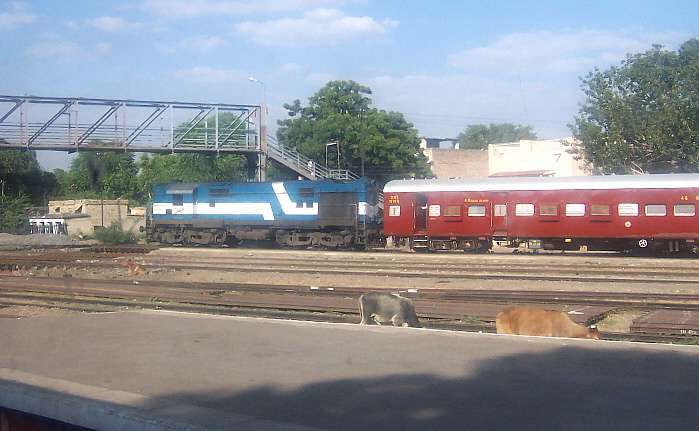
Another of the broad gauge Co-Co WDM-2 diesels, No.17227, pulls a passenger train north out of Ajmer. Finally (and appropriately bringing up the rear) is the brake van below.
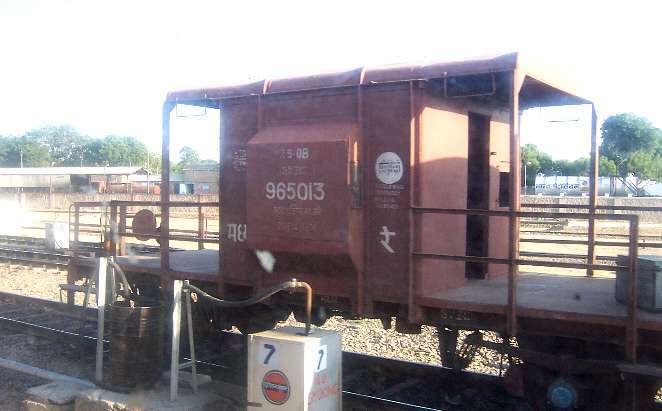
Clearly owing a lot to British heritage, this brake van was typical of older rolling stock, signalling, architecture and line furniture that could be seen around the railway system. I'm sorry the railway pictures aren't brilliant, but we were pushed for time, and didn't get many opportunities for decently-composed photography, much of which was taken through a very grubby carriage window.
One final note: I thought the Eurostar platform at London's Waterloo International was long, but the endless length of platform we passed through at Delhi Cannt must take some beating. Does anyone know how it compares?
Dave Spencer has some fine video of Indian trucks outside Calcutta in 2007 here.
Email Events diary Past events list Classified adverts Classic U.K. Buses Classic Irish Buses Classic Manx Buses